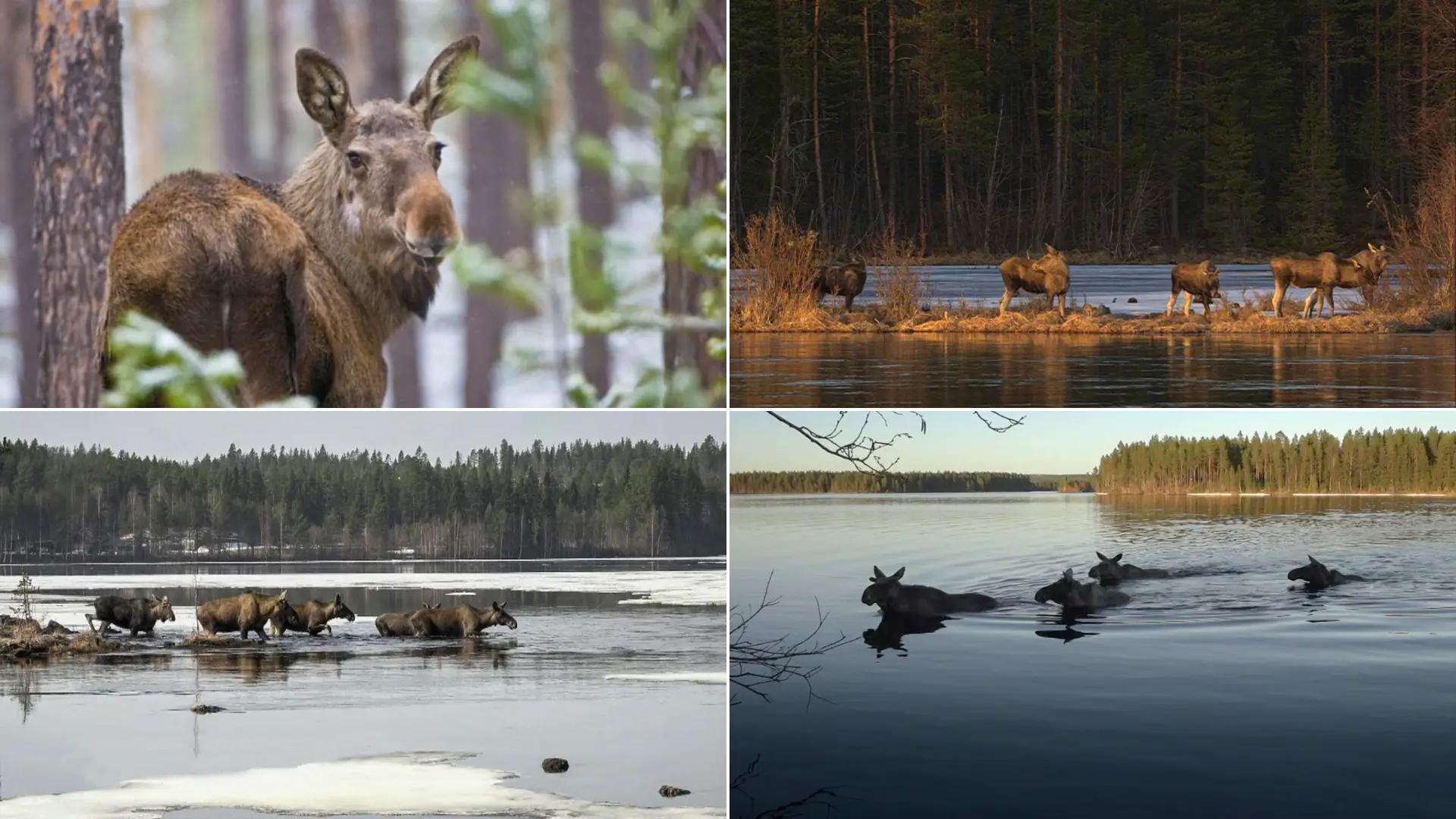Let’s be real: we don’t usually block off time in our calendars to watch a moose take a slow stroll across a snowy landscape. But every spring in Sweden, something oddly captivating happens — and this year, it’s started early.
The “Great Moose Migration” — or as locals call it, Den stora älgvandringen — isn’t just a quirky wildlife tradition. It’s a nationwide event, an unexpectedly soothing spectacle that’s now pulling in millions of viewers from around the world, especially in the US and UK. Why? Because sometimes, watching a massive animal wade across a freezing river beats doomscrolling any day.
The Moose Are On the Move — and We Can’t Look Away
Each year, as the snow melts and the northern forests begin to yawn into spring, hundreds of moose migrate from the Swedish coast to the inland forests. It’s a trip they’ve made for centuries, trudging through dense pine woods and across the icy Ångerman River like oversized forest ghosts.
But here’s the twist: for the last six years, Swedish public broadcaster SVT has been livestreaming the whole thing — 24/7. That’s right, 20 straight days of high-definition, slow-TV bliss. No dramatic narration, no background music. Just raw, uninterrupted moose behavior, with the occasional guest star — a bear, maybe a lynx, or a confused reindeer bumbling across the frame.
And this year? The moose got a head start. Thanks to a warmer-than-usual spring, the migration kicked off around April 15 — about a week earlier than normal. The show’s running until May 4, and let’s be honest: it’s probably more relaxing than whatever’s on Netflix.
“Moose Crossing Ahead” — And Yes, They Swim
One of the most anticipated moments in the livestream is when a moose decides to take the plunge — literally — across the Ångerman River. You can almost hear the collective gasp from thousands of viewers when a giant bull moose steps into the water and begins paddling across with surprising grace. It’s majestic. It’s weirdly emotional. And it’s all happening in real time.
To capture this, SVT has gone full nature-nerd. They’ve installed over 30 cameras — some with night vision — rigged across 20 kilometers of forest. Drones hum quietly overhead. A 15-person team monitors everything from a quiet corner of Umeå, ensuring that humans don’t interfere with the animals’ journey.
Slow TV? More Like Chill TV
If you’ve never heard of “slow TV,” this is the best entry point. It’s kind of the antithesis of TikTok. There’s no punchline. No cutscenes. Just nature doing its thing. And that’s exactly the point.
Viewers say it’s almost meditative. You could be sipping tea in Manchester or tuning in while doomscrolling in a Brooklyn apartment, and suddenly you’re hypnotized by a moose munching on birch leaves. There’s something therapeutic about it — the unhurried pace, the natural sounds, the sheer unpredictability of wildlife.
It’s like watching a fireplace channel, but with antlers and the occasional splash.
So Why Are Millions Tuning In?
Part of the appeal is timing. Spring in the northern hemisphere is a fresh-start season. Flowers bloom. Birds return. People start cracking open windows again. The moose migration aligns with that craving for renewal — it’s nature, rewilded and uninterrupted.
But let’s not pretend this is only about seasonal vibes. There’s a low-key thrill in watching the moose do, well, anything. Will that one cross the river? Will another one give birth right on camera? Will a bear photobomb the shot? Who knows. But you keep watching.
And unlike most nature shows, there’s no sense of urgency here. If you miss a big moment, no worries — someone probably clipped it on Reddit already.
Where to Watch (and When It’s Best)
The livestream is available for free on SVT Play and YouTube. While the feed runs around the clock, dawn and dusk are the sweet spots — moose are most active when the light’s soft and the forest is just starting (or ending) its day.
If you’re working remotely or just need a mental breather between meetings, keeping it on in the background is oddly therapeutic. Think of it as white noise with hooves.
What If the Moose Know Something We Don’t?
Here’s a cheeky idea — maybe the moose are onto something. Maybe the real secret to surviving modern chaos is a long, patient walk through the woods. No agenda, no drama — just movement, instinct, and the occasional snack.
So if you find yourself oddly invested in the progress of a solitary moose as it ambles through a Swedish forest this week… you’re not alone. And honestly? That’s kind of beautiful.
